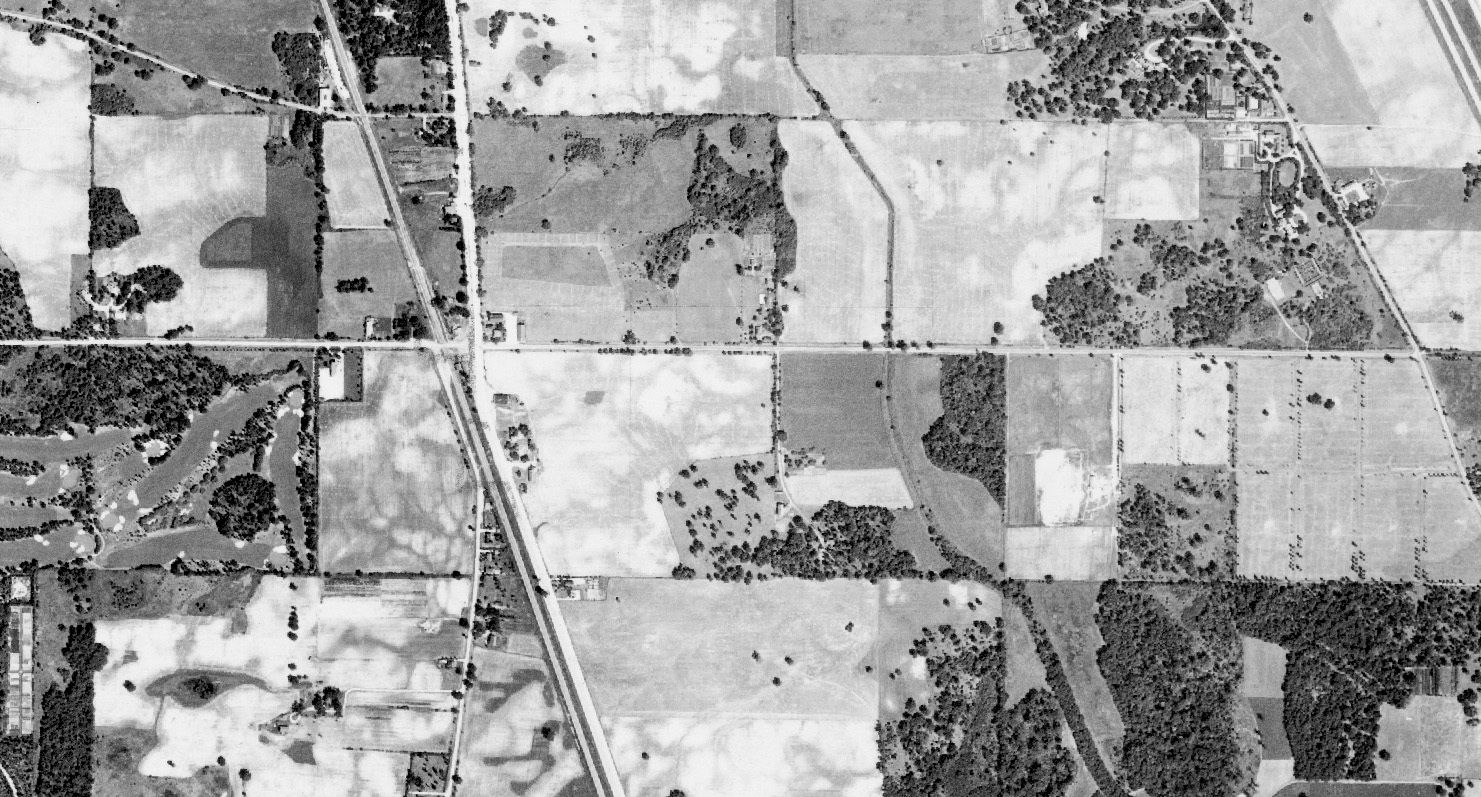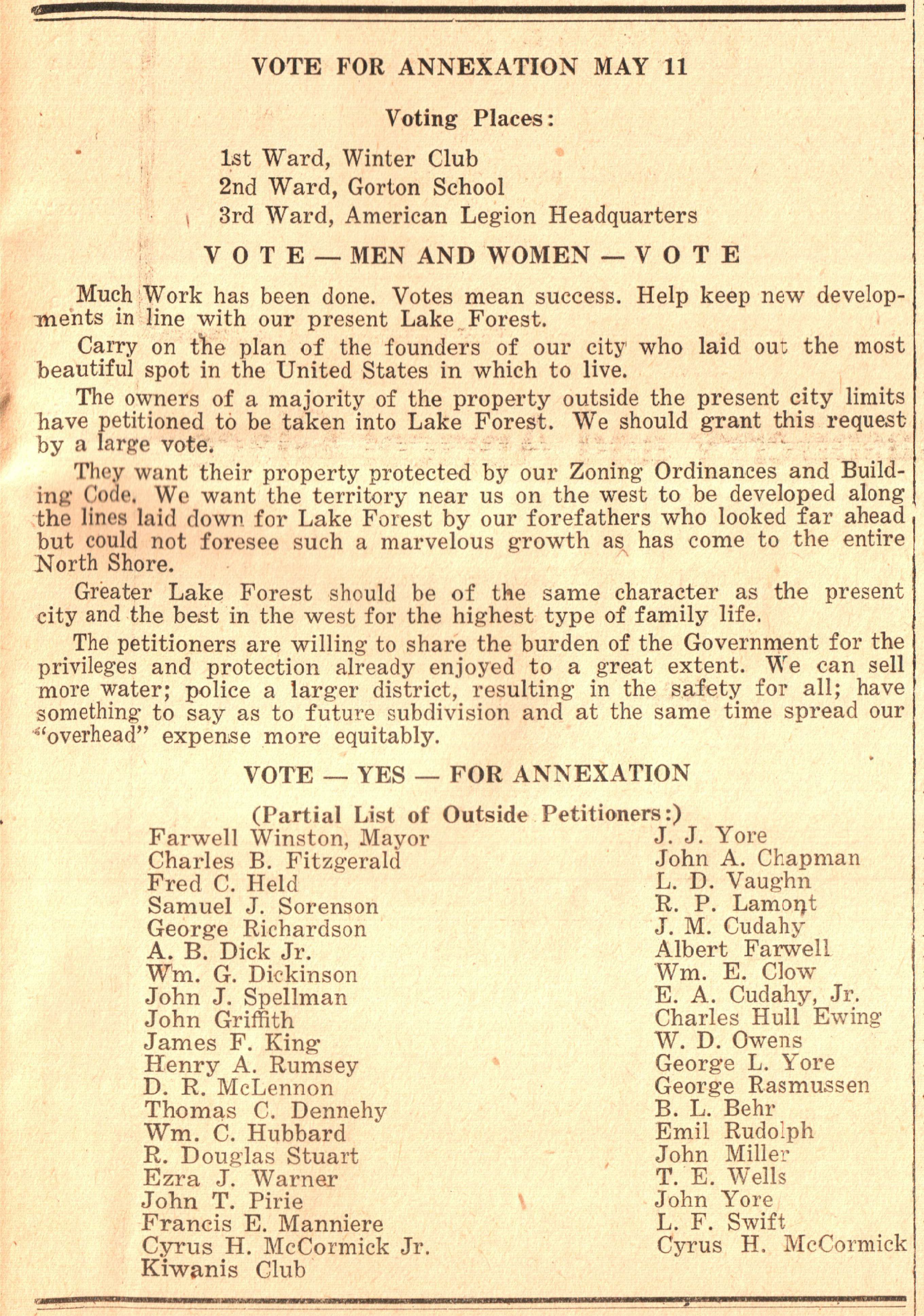
Lake Forest Triples in Size: Everett Annexation, 1926
Getting Here Newcomers Making It Home Nature By Design Timeline
1939 Aerial, Everett Road and Waukegan Road.


By the 1920s, country places had succeeded family farms as the dominant feature west of Lake Forest, and the owners began to wonder about the future of their property investments. Who would take care of the roads? Where would the water come from? What could be built next door?
One of the state’s earliest zoning ordinances had been enacted in Lake Forest in 1923, and three years later, the Plan Commission was established. By mutual agreement amongst the power brokers of Lake Forest and the estate owners on the borders, the first task of the Plan Commission involved the acquisition of territory.
Led by Louis Swift, who had over 1,000 acres, a majority of the property owners west of Lake Forest petitioned to be annexed by the city. On May 11, 1926, voters approved the annexation of lands to the west by a vote of 303-5. With about 9,000 additional acres, Lake Forest had just tripled in size.
This advertisement that appeared in The Lake Forester right before the vote in May 1926 presents the annexation as a win-win proposition. Those who lived in the newly annexed territory would come under the protection of Lake Forest's zoning ordinance and its city services; in turn, they would share the property tax burden. And current Lake Forest residents would have a say in how the land adjacent to their town was developed.
